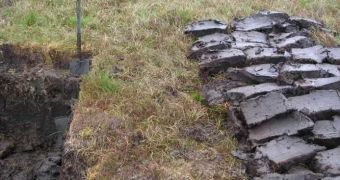Some 5,000 years ago, the amount of methane in our atmosphere suddenly spiked, in a strange phenomenon that went unexplained for a very long time. One of the earliest ideas as to what happened says that the onset of extensive rice cultivation in Asia might have had something to do with this. This proposal has gained increased support over the years, but now a new line of research attributes the blame to expanding northern peatlands, which advanced considerably millennia ago, AlphaGalileo reports.
The new investigation was conducted by experts at the Departments of Environmental Sciences, and of Geosciences and Geography, at the University of Helsinki. The investigators say that peatlands exhibited an unusual progress at the time, expanding well beyond their previous locations. As it is well known in the international scientific community, the most common sources of methane include peatlands, rice plantations, landfills, fossil-fuel production processes, biomass combustion and animal farming. Continental glacier studies have revealed that, five millennia ago, the levels of methane in the air grew out of control, for no apparent reason.
Other than water vapor and carbon dioxide, methane is the most potent and dangerous greenhouse gas. It helps trap and keep heat rising from the planet's surface – that would otherwise dissipate into space – below, producing the infamous greenhouse effect. Established knowledge until now had it that peatlands could not have participated in the ancient methane spike, as they were believed to have been already established at the location for at least a few thousand years. It is also common knowledge that peatlands (made up of decomposing organic matter), release lower amounts of methane as they age.
In a scientific paper that was published last week in the esteemed Quaternary Science Reviews series, the researchers showcase an extensive radiocarbon dating database, featuring more than 3,000 well-established dates. From this powerful analysis tool, the investigation team concluded that the advancement of the peatlands accelerated considerably shortly before methane concentrations were boosted, suggesting a direct, causal link.

 14 DAY TRIAL //
14 DAY TRIAL //